Last updated: February 2018

Overview
When using an Apple device for a Cisco dCloud session, the Apple device must be connected to the Cisco dCloud environment. There are two options for connecting an Apple device to the Cisco dCloud environment:
- Connect to the wireless network on a router
- Connect to another available wireless network and then configure Cisco AnyConnect
Only one of these connection methods is required. Both are described below.
Connect to Wireless Network on a Router
To connect an Apple device to an active Cisco dCloud session using a router configured for dCloud:
- On your Apple device, go to Settings > Wi-Fi.
- From the list of Networks, select the data network associated with your router. For example, cisco-dcloud-data-kit-XX (where XX represents the identifier assigned when you registered your router).
- When prompted, type the password adgjmptw and tap Connect.
Your Apple device will receive an IP address and will be active on the network.
Connect to dCloud Session Using Cisco AnyConnect
You must be logged into the dCloud UI and your session must be active to perform this activity.
Connect an Apple device to an active Cisco dCloud session using Cisco AnyConnect to:
Add New Connection
To add an Apple device to an active Cisco dCloud session using Cisco AnyConnect by adding a new connection:
- Connect your Apple Device to a local wireless connection.
- From a browser on your Apple device or laptop go to http://dcloud.cisco.com and log in with your Cisco.com credentials.
- In dCloud, go to My Hub > Sessions, locate your active session, and then click View.
- Open Details > Session Details to view the AnyConnect Credentials for your session.
- Download and install Cisco AnyConnect from the App Store, if it is not already installed on your Apple device.
- Launch AnyConnect.
- Tap Allow, if prompted. A confirmation window opens the first time you start AnyConnect.
- Tap Add VPN Connection. If this is the first time you are accessing AnyConnect, toggle the AnyConnect VPN button.
- In the Add VPN Connection window:
- Enter a Description.
- Enter the Server Address using the Host URL listed in the AnyConnect Credentials section in dCloud. In the example below, the Host URL for the dCloud EMEAR data center is used. The Host URL will vary, depending on the dCloud data center used to schedule your session.
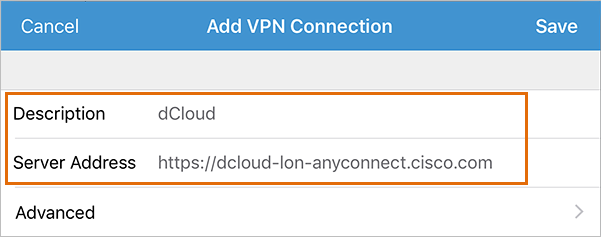
- Tap Advanced.
- In the Advanced window, verify or update the following settings:
- Network Roaming is toggled ON
- Certificate is set to Disabled
- To change this setting, tap Certificate and then choose Disabled on the Select Certificate window.
- Connect with IPsec is toggled OFF.
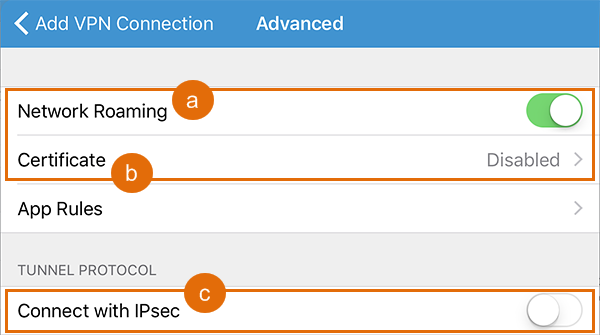
- Tap the back arrow to return to the Add VPN Connection window.
- Tap Save on the Add VPN Connection window and then click Allow on the confirmation pop-up.
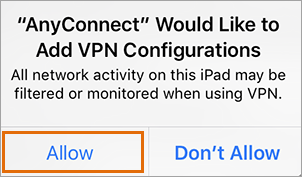
- Toggle AnyConnect VPN to ON.
- In the Authentication window, enter a Username and Password from the AnyConnect Credentials section of your dCloud demo. The usernames and passwords are dynamically generated per dCloud session.
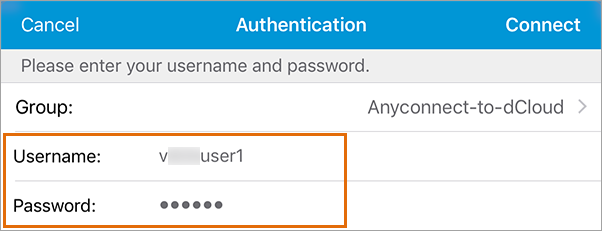
- Tap Connect.
- A message will display to confirm your connection to the dCloud environment. In the example below, the message confirms connection to the dCloud London Platform. The actual message will differ depending on the dCloud data center used to schedule your session.
- Tap Accept. Your device is now connected.
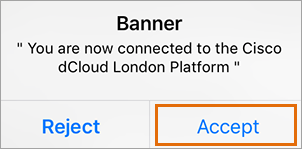 .
.
Edit Existing Connection
To add an Apple device to an active Cisco dCloud session using Cisco AnyConnect by editing an existing connection:
- Launch AnyConnect.
- Tap Connections.
- Click the info icon to the right of the VPN connection entry.
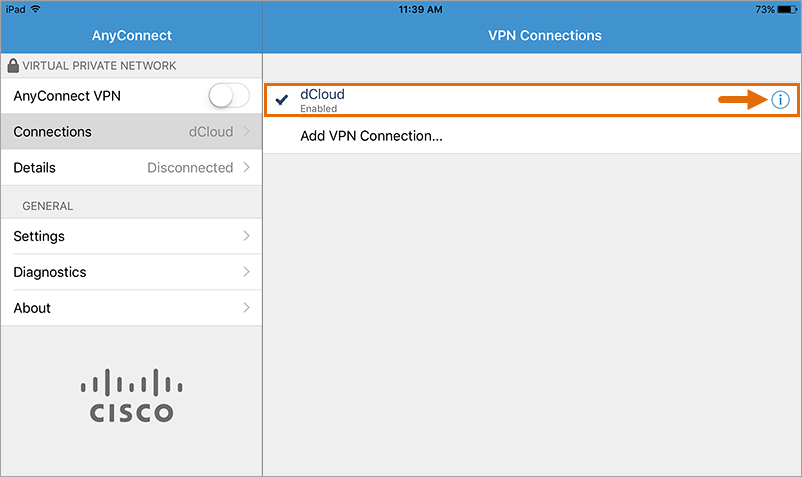
- Update the VPN connection settings as needed.
- Optionally, tap Delete the VPN Connection to remove the VPN connection entry.
- Tap Save.
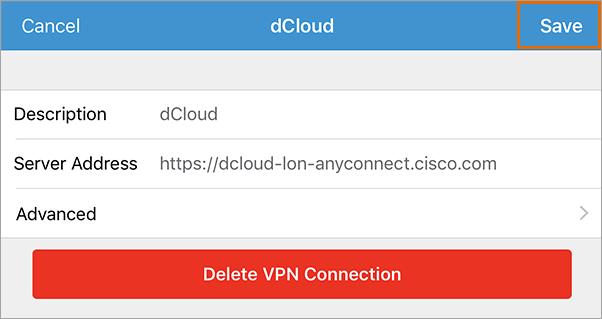
Instruction created using: Cisco AnyConnect Secure Mobility Client ver 4.6.00122, Apple iOS 10.2.